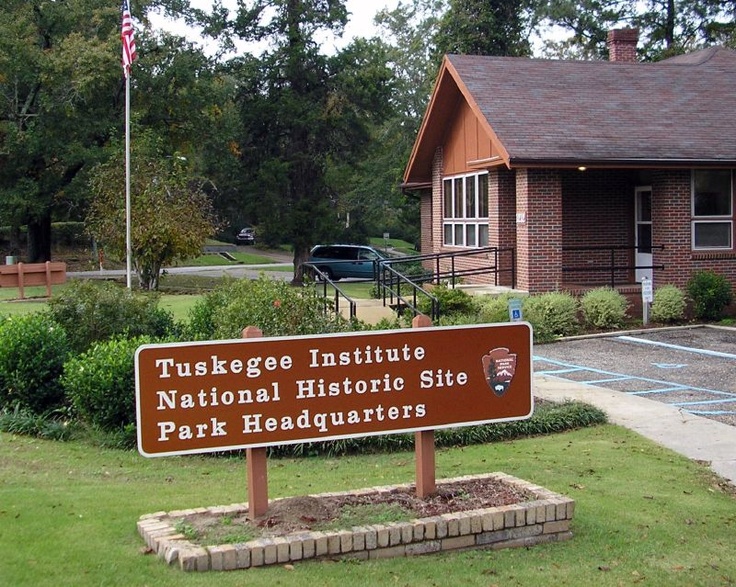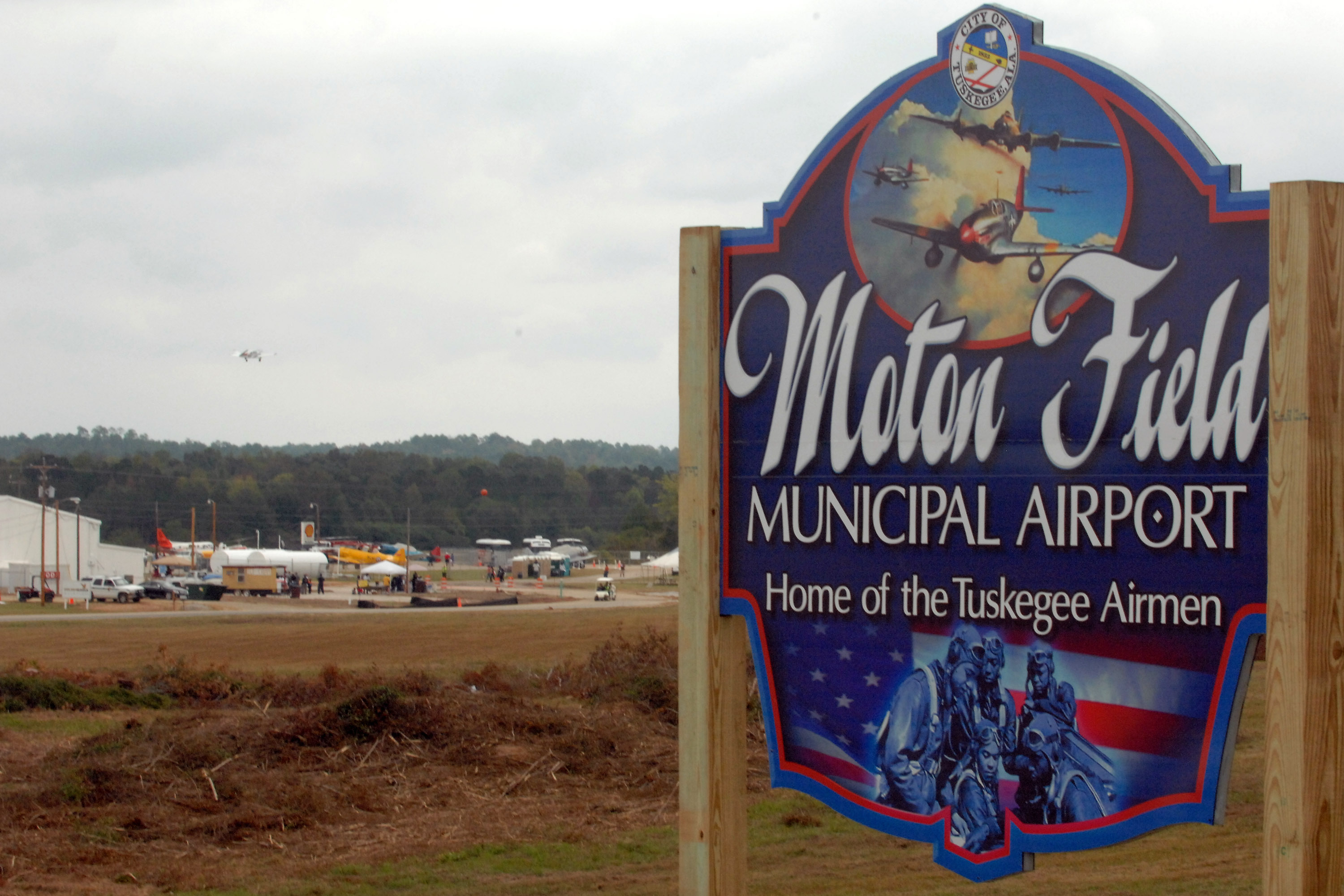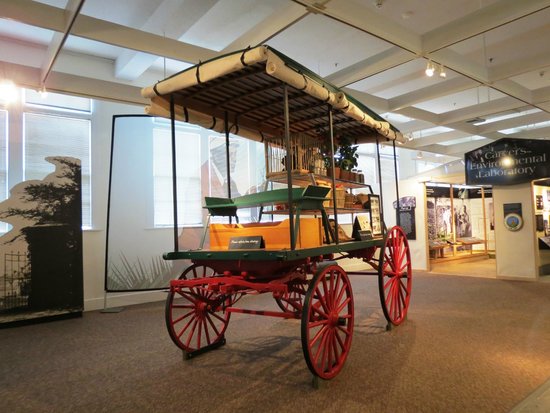Tuskegee National Historic Site Tells The Story of the Brave Tuskegee "Airmen"
The Tuskegee National Historic Site, now operated by the National Park Service, was named and founded after the pioneering Tuskegee Airmen.
Located at 1200 West Montgomery Road just north of Old US Highway 29 in Tuskegee Alabama, it makes in one of the most popular Alabama backroads destinations.
Situated at Molten field, it commemorates the contribution made by the African- American airmen during World War II.
Overview of Tuskegee National Historic Site
 The Entrance to The Tuskegee National Historic Site
The Entrance to The Tuskegee National Historic SiteIn fact, before it was established; African Americans were not allowed to fly in any branch of the military.
First constructed in 1941, the field was named after the former principal of the Tuskegee Institute, Mr. Robert Russ Molton.
As mentioned above, before the year 1940, all African Americans were barred from flying in any of the four branches of the US military.
However, Civil rights organizations were really pressing the issue, and as a result of this pressure, the Tuskegee Airmen were formed in 1941.
The actual term “Tuskegee Airmen” was used to define any and all of the airmen that were assigned to this early “experiment”.
This “experiment” which would later completely define the Tuskegee National Historic Site, included not only pilots, but support staff and instructors as well.
However, that was not all as it also included maintenance people as well as the key support personnel for the pilots, including the navigators and bombardiers.
The Tuskegee Institute was selected as the training site for one major reason in the early 1940’s: it’s commitment to aeronautical training.
The Institute not only had the facilities that were up and running, but it also had the technical instructors, the engineers, as well as something even more important, the weather.
It had the perfect climate for training year-around which led to its early and continued success.
Despite all of the segregation this institute had experienced in the past, the selected African Americans not only proved they could fly; the proved they were extremely talented at it over time.
The Overall History
 Moton Field in Tuskegee Alabama
Moton Field in Tuskegee AlabamaMoton field itself was built between 1940-1942 with funding by Julius Rosenwald, the founder of Sears, who helped to fund hundreds of schools in the early 1900’s.
Several staff members from Maxwell Airfield in Montgomery Alabama also helped to set up the field, which brought it more instant credibility.
However, it was the Institute laborers as well as the skilled workers that allowed the Tuskegee National Historic Site to open on time.
Once the site was opened, the “experiment” started.
The Army Air Corps not only assigned officers to oversee the facility, but they also provided several key ingredients needed to make it successful.
This included flying cloths, much needed textbooks, parachutes, as well as mechanic suits.
The rest of the actual faculties were provided by the Institute which included the living quarters, a mess hall for all of the cadets and officers, hangers, as well as several much-needed maintenance shops.
However, there was something else very unique about this “experiment”; they were one the handful of institutions to develop and control the flight instructing facilities. In the early 1940’s, this was extremely rare.
This included the Kennedy Auxiliary Airfield, the Hardaway Auxiliary Airfield, as well as the Catabee Flight Strip.
The early Site became so impressive that in March of 1941, the wife of the President of the United States, Eleanor Roosevelt, visited.
The very first class of the “experiment”, class 42-C, began its first training on July 19th, 1941.
Leading the classes was student officer Captain Benjamin O Davis Jr. who was the commander of the cadets.
The first class included 12 cadets, including a couple of white cadets. The classes by design, were extremely rigorous, and covered subjects such as navigation and meteorology.
This “experiment” was soon changed to a rousing success story as the Tuskegee National Historic Site trained over 1,000 African American aviators for the war effort.
Moton field was officially closed in 1946 and in 1972 a huge portion of it was deeded over to the city of Tuskegee.
It was so well built and maintained that it is still being used today as a municipal airport.
References
Legends of Tuskegee, from the National Park Service

Alabama Gift Store
Numerous Items for You and Your Family to Enjoy
See it here at the Gift Store
Copyright 2019-2023 Alabamabackroads.com
All Rights Reserved

















